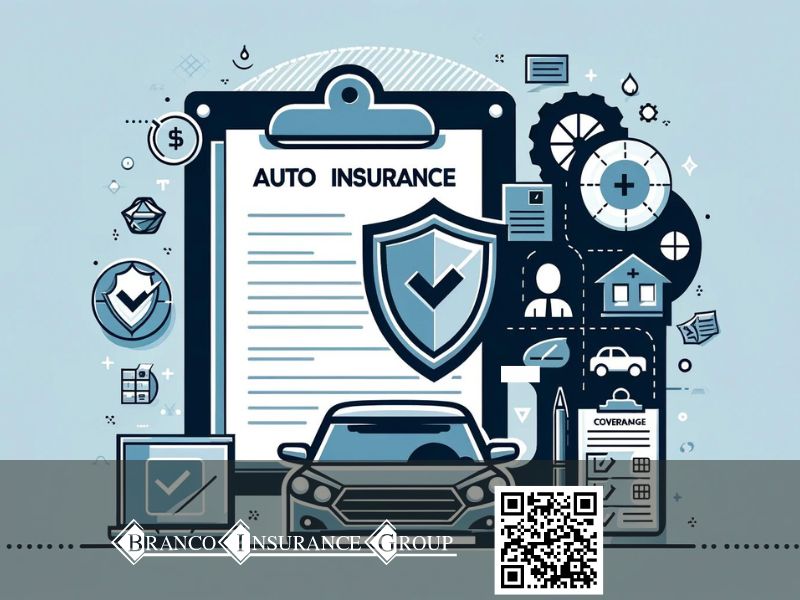
How Employees Can Help Reduce Cybersecurity Risks
Many small businesses conduct themselves directly online. Having employees who are not properly trained in cybersecurity can increase the risk of a cyberattacks. Adequate cybersecurity

Purchasing auto insurance is an important part of vehicle ownership that helps provide critical financial protection in the event of an accident or other damage to your car. This comprehensive guide will walk through everything drivers should understand about auto insurance coverage, including the different types available, what factors impact your premiums, how the claims process works, and tips for getting the settlement you deserve.
Auto insurance is a contract between you and an insurance company that helps pay for expenses related to your vehicle in case of covered incidents. By paying a monthly or annual premium, the insurance company agrees to pay out a certain amount, according to your policy terms, if you file a claim for a covered loss like an accident, theft, vandalism, or other vehicle damage.
Auto insurance protects drivers in a few key ways:
Carrying adequate auto insurance is required in most states and critical for drivers looking to protect their finances from the high costs that come with accidents and vehicle repairs or replacement.
In almost every state some level of auto insurance is legally required. Liability coverage specifically helps pay for property damage and bodily injuries you cause to others when driving your car.
These amounts provide basic coverage, but accidents often cost more than the minimum limits, especially if multiple vehicles or injuries are involved. That’s why many experts recommend carrying more than the absolute minimum liability coverage required.
You also need to have auto insurance if:
Auto insurance policies bundle different types of coverage that work together to provide complete protection. The key types of coverage drivers should understand include:
There are two main components of liability coverage:
Liability insurance helps protect your finances if you cause an at-fault accident. Without it, you could be sued directly by those you injure or whose property you damage in a wreck.
Collision coverage pays to repair or replace your vehicle after an accident with another car or object. For example, if you crash your car into a guardrail, pole, or another vehicle, collision helps pay for repairs or the value of your car if it is totaled.
Collision is often required if you have an outstanding auto loan or lease on your vehicle. It may have a deductible amount you pay out-of-pocket before coverage kicks in.
Comprehensive insurance helps pay to replace or repair your vehicle if it is stolen or damaged by something other than a collision. This includes:
Like collision, comprehensive coverage is usually required by any lienholders until a vehicle is paid off. It is an optional coverage for vehicles you own outright.
Uninsured motorist coverage provides protection if you are in an accident caused by a driver with no liability insurance who then cannot pay for your vehicle repairs or medical expenses.
Underinsured motorist coverage kicks in when the at-fault driver has insufficient limits to cover the costs of your damages or medical bills.
These coverages protect you when other drivers fail to carry adequate insurance. Without them, you could be stuck covering the cost of injuries or property damage another driver caused out of your own pocket.
Known as PIP coverage, personal injury protection helps pay medical expenses, lost wages, household services, and even funeral costs after an accident. It applies no matter who is at fault and often carries a small or no deductible, making it more readily accessible for urgent expenses right after an accident.
In addition to the major types of coverage above, most auto insurance policies also include a few other offerings like:
It’s just as important to understand exclusions and situations where auto insurance will NOT provide reimbursement or repairs:
A good auto insurance agent will explain all the intricacies of what is and is not covered and help you select adequate limits. Be sure to read your policy documents closely as well.
Auto insurance companies use a number of determinants to calculate your insurance rates or premiums. The exact formula varies by insurer, but commonly considered factors include:
Comparing quotes with the same coverage amounts helps ensure you get the best rate possible. Maintaining a clean driving record, improving your credit score over time, asking about discounts, and opting for higher deductibles when finances allow are all smart ways to help control insurance costs.
The basics of filing an auto insurance claim include:
It’s imperative during this process to be completely forthright about how the accident or incident occurred. Adjusters investigate to prevent fraud. Also, be responsive to your insurer’s requests for additional data in a timely manner to speed resolution of your claim.
If your insurer makes you a settlement offer that seems too low or unfairly denies certain damages in your claim, you do have options to pursue more adequate reimbursement including:
Whenever submitting appeals or complaints, always remain polite and stick to just the facts of your case. Include evidence like repair estimates, crash scene diagrams, or medical records to strengthen your position.
If negotiations fail and a settlement can’t be reached, you always have the right to then withdraw your initial claim and pursue legal action directly against the at-fault driver instead to recover your costs.
Protecting your assets and finances with adequate auto insurance is essential for every vehicle owner. While liability coverage is mandatory, drivers often benefit by adding collision, comprehensive, and other protections.
There are many complexities and exclusions involved however, so working with a qualified independent insurance agent in your area is the best way to secure complete, customized coverage that fits your specific situation.
Besides explaining your options, local agents assist when you need to file a claim and provide guidance for resolving settlement disputes as well through appeals or outside legal channels when necessary.
Understanding exactly what is covered and what impacts your auto insurance premiums allows you to have informed, realistic expectations about the claims process. Hopefully this overview better equips you to make wise choices in purchasing a policy tailored to all your coverage needs and budget.
At Branco Insurance Group, our goal is to provide you and your family or business with the best possible protection to secure your future. As an independent agency representing many highly-rated carriers, we have the expertise to configure customized coverage that truly fits your unique needs and budget.
Whether you need to insure a home, auto, motorcycle, or more, our experienced local agents make it simple to compare plans side-by-side to find the right fit. We are always available to answer questions, tweak policies as your life changes, and ensure you receive superior service when filing claims. Our 5-star customer satisfaction ratings demonstrate that we continually meet expectations.
Unsure what policies match your situation or wonder if there are savings to unlock on premiums? Contact us for a free consultation. We’ll outline helpful recommendations so you can make fully-informed decisions to safeguard what matters most – from people to possessions. At Branco Insurance Group, we handle the insurance complexities so you can enjoy greater peace of mind.
What are 5 tips for buying car insurance?
The best auto insurance coverage depends on your specific situation, but generally includes higher than minimum liability limits to protect assets, collision/comprehensive to cover repairs or total loss, decent medical payments/PIP to cover injuries regardless of fault, and uninsured motorist in case others cause accidents without enough insurance.

Many small businesses conduct themselves directly online. Having employees who are not properly trained in cybersecurity can increase the risk of a cyberattacks. Adequate cybersecurity

Because seasonal changes affect your vehicle in a multitude of ways, it’s important to prepare for the transition from summer to fall. You’ll want to
